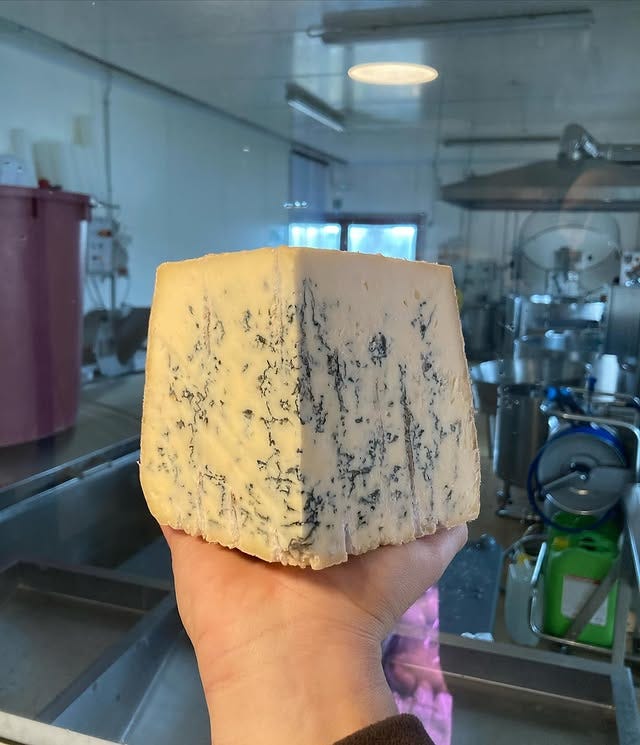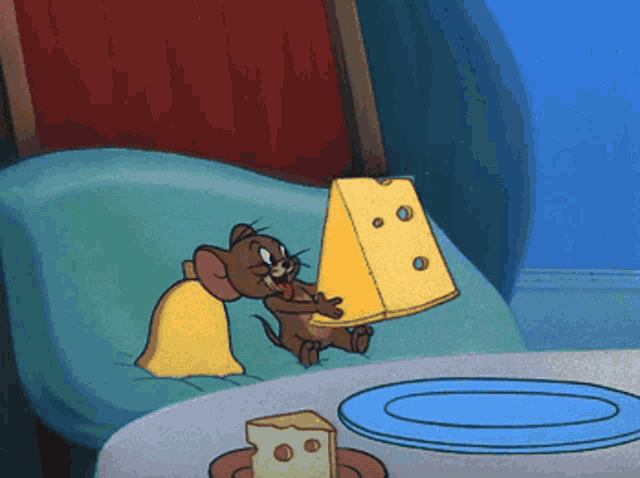I am a tired cow.
There’s really no other phrase to describe how I feel in the heat in Rome. A tired cow, who can no longer graze up and down the mountains - in this case up and down the Metro A’s staircases and Rome’s many many f*cking hills.
The other day I had a lovely chat with a talented chef friend of mine - and pizza master behind Lina La Pizza in Teglia in Trionfale. He shared his love of a specific cheese, a love he owes to his nonna.
That cheese is stracchino.
Enter the tired cows (not me this time!)
Stracchino is one of Italy’s most underrated cheeses. It sits in the shadows of the more famous mozzarella and mascarpone, among other better-marketed cheeses.
Exhibit A: Editing this post Grammarly wanted to autocorrect stracchino to stracciatella every damn time…
Not going to lie: I’d prefer that stracchino stays the unadulterated underdog. But still, it deserves way more attention than it’s receiving.
Stracchino gets its name from ‘tired cows,’ the ‘mucche stracche’ who had just about had enough grazing in the steep ole Alps. This milk is heated and then introduced to the necessary cultures and rennet that will allow the curd to form. Rather than being pressed, it sits in baskets to drain naturally before salting and aging for a few days.
The result: the butteriest, tangiest, creamiest cheese that is ready to do a little dance in your mouth, and in all the best recipes.
note: stracca means ‘tired’ in certain dialects in the region of Lombardy. In Italian, its just stanca.
Some call stracchino the real cream cheese of Italy - but don’t let that fool you. It’s more cream cheese in its application than its flavor. If we are talking about flavor and consistency, stracchino is somewhere between butter and brie, heaven and crème fraiche.
You get the picture.
It’s not stinky. It’s simple and easy, ready to be spread on a simple summer sando with any of your favorites. Think prosciutto cotto or zucchine, grilled or fried. For that food porn, see below.
Stracchino also makes a grand entrance in many pasta dishes. While there’s a slew, I love to state the most shocking:
pasta con salmone e stracchino - pasta with smoked salmon and stracchino. Yup, basically Italians transforming the lox and bagel concept. Funny enough, many will do salmon with actual cream cheese, or how Italians call cream cheese: Philadelphia.
Isn’t food marketing a funny thing?
I’ll save the strange smoked salmon pasta conversation for another day. Back to the marvel that is stracchino.
what the hell is stracchino anyway?
Sure, stracchino doesn’t have the look of a camembert and the finesse of a finely aged toma. But it’s just as great as them all. Through its aging process, cultures produce lactic acid that sprinkles some magic fairy dust on the cheese, leaving it tangy and playful. And being that the cheese is so fresh, often aged just a few days, you get the flavors of a real fresh Alpine cheese: a wild affair of juicy bitterness.
Stracchino is the definition of contadino sh*t - its origins go back to the medieval herdsman in Lombardy in the 11th century just creating things for survival, with the the sexy stracchino being the result.
Interestingly enough, stracchino is the precursor to gorgonzola and even taleggio! The only difference between stracchino and taleggio is that it doesn’t undergo an extensive salting and aging process with fancy bacteria to develop an intense rind.
Gorgonzola is known in Lombardy by many as the stracchino sbagliato, the messed up stracchino. It came about in the Middle Ages somewhere near Milan, where a cheesemaker - out of not wanting to waste - combined a day old curd for stracchino with a fresh curd. The natural molds took over and resulted in the silky blue cheese we love today.
Total contadino shit.
Fortunately, you can actually get a taste of the ancient stracchino, which was often aged longer for preservation and comes across more as a great great great etc... grandpa of taleggio. The Stracchino all’antica delle Valli Orobiche is protected by the Slow Food presidium, preserving a nearly 1000-year-old cheesemaking recipe and history from Lombardy.
Cool stuff, no?
So yes, stracchino is some old cheese from Italy’s Northern Alpine-kissed country. Today, you can find it proudly made by producers across northern Italy, the most famous being Nonno Nanni in the Veneto, who really catapulted Italian soft cheeses into global fame. Their first cheese was formagelle - an ancient variety of stracchino. The company currently owns the largest coagulation facility in Europe.
But just like every tourist, food also travels fast in Italy…
Stracchino is now made all over Italy, and is even sold in the US. Today, you can score some Nonno Nanni stracchino in America, thanks to places like Eataly.
But let me tell you: some of the best stracchino is made right here in Rome. Don’t let that news travel north.
Ammano is a fabulous organic caseificio by the De Angelis family, who began their entire journey with stracchino, specifically stracco bianco - another old-school stracchino that you might mistake for a taleggio.
But no, honey, the cows behind this cheese be grazing in the fine hills in Fiumicino - yes, right in the airport.
KIDDING, Fiumicino is a town and municipality in the greater province of Rome. Ammano is situated among the hills right between Lake Bracciano and the Roman coastline.
The De Angelis fam puts so much TLC into every single one of its cheeses. Their simple stracchino has its own flair: it’s zippy, buttery, and with a hint of a bitter barnyard-yness that you want in any cheese.
While you can totally bug them for a visit, you can also find Ammano cheese all around Rome. Artisanal food shops like Hettaro and Pizzicarola often keep stock of Ammano’s best, from their stracchino to their beloved seta, a salty, delicious yogurt. ProLoco Centocelle always keeps Ammano’s incredible il blue in stock, an absolute blue cheese lover’s dream.
You will also find Ammano cheeses integrated into the menus of the best restaurants in the city, like the cool kids of Trecca/Fratelli Trecca, who are never shy to show their love for Ammano’s products.
Anyways, the real point here is:
(Besides that stracchino is sexy AF)
Italy may be regional, but gosh, this country is a mixed-up salad bowl of cross-cultural contamination. Stracchino - once the cheese of northern medieval Lombards - is now having a sexy revival as a Laziale queen.
Cuz that’s just the way the culinary world goes round, ok?
Because at the end of the day, the best food is from those who give it the most love, which comes from small producers who put their blood, sweat, and tears into growing the most beautiful zucchine, producing the most irresistible cheese, and everything in between.
Who cares where the cheese technically originated first?
So I bid you to go on and taste stracchino - a scoop to the face, and then spread on your sandwich. Try the commercial Nonno Nanni, then venture out and seek the stracchino from curious local producers that just want to fill your bellies with a good load of lactose love.
Ciao for now, babez!
Xx,
Victoria










